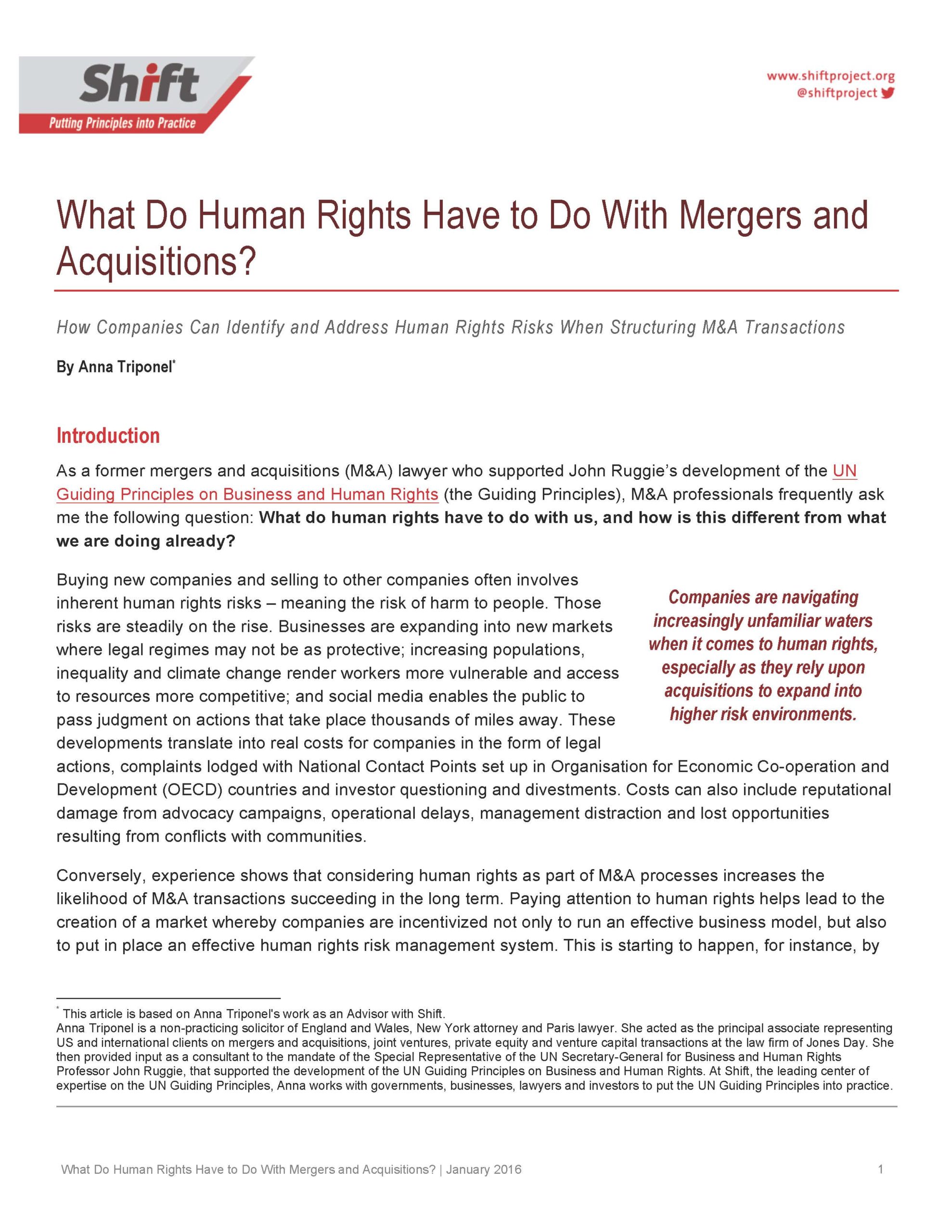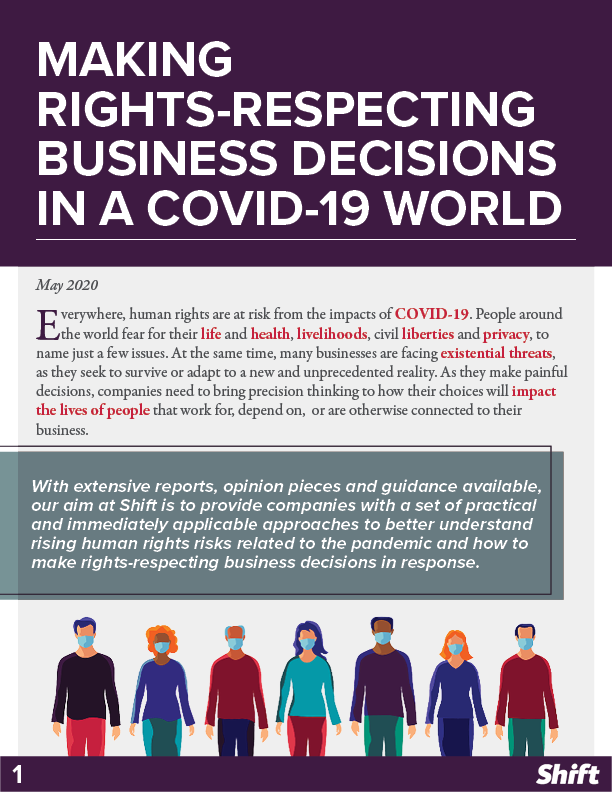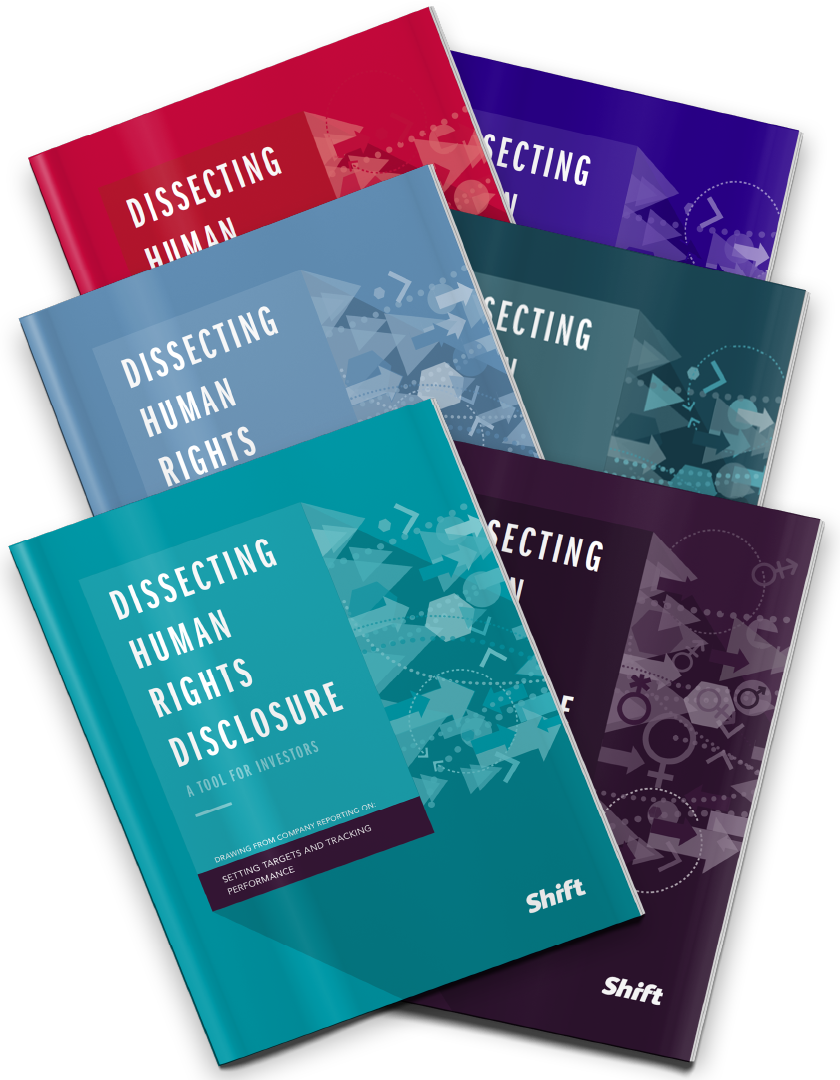This resource is based on Shift’s experience working with companies’ M&A teams on practical steps that can be taken as part of the existing M&A due diligence process. For more explanation and discussion of this topic, we also recommend our webinar with the UN Global Compact, Ericsson and Total.
Summary
Buying new companies and selling to other companies often involves inherent human rights risks – meaning the risk of harm to people. Those risks are steadily on the rise, and there is no shortage of examples of M&A transactions that fail, or cost significantly more for a company in the long term, because of a lack of consideration of human rights issues.
These kinds of inherent human rights risks are leading companies to start to integrate consideration for human rights into their M&A processes. Yet little information is publicly available about how they are seeking to do so. Revising due diligence checklists and crafting template representations and warranties alone will not work.
There is no shortage of examples of M&A transactions that fail, or cost significantly more for a company in the long term, because of a lack of consideration of human rights issues. Prominent examples include:
- Meridian Gold, which acquired Brancote Holdings, the owner of a site in Argentina, for US$320 million. Although legal due diligence did not uncover any issues, Meridian Gold ended up with five years of litigation rising to the Argentinian Supreme Court and lost its entire investment because the surrounding community opposed the use of the land for an open-pit gold mine. The M&A team could have assisted by flagging that the legal title to the land alone may not be sufficient in light of the local dynamics around mining;
- Nokia, which suffered a significant hit to its reputation when news broke that its products and services had assisted the Iranian government’s efforts to track, imprison and harm political dissidents during the 2009 Iranian elections. In reality, Nokia had divested the business six months prior to the elections to Iran Telecom. But public opinion was that if a company sells a business that can cause harm, the seller should seek to limit the risk of such harm by incorporating restrictions during the sales transaction, or seeking to sell to another buyer;
- US company American Sugar Refining, which acquired Tate & Lyle Sugars for £211 million in 2010. Subsequent to the transaction, Tate & Lyle Sugars was subject to a £10 million lawsuit in the UK High Court for alleged connection to land grabbing in Cambodia. The M&A team could have assisted by flagging risks associated with Tate & Lyle Sugars’ suppliers and the fact that legal title to land in Cambodia can mask corrupt practices.
Based on work with companies that are at the leading edge of efforts to integrate consideration of human rights into their M&A processes, this article describes the notable differences between a traditional M&A process – one that seeks to identify and address risks to the company – and one that seeks to identify and address risks to people that play out throughout the M&A transaction. It describes the steps companies are taking to add the human rights lens when (i) identifying the issues to address in the course of due diligence, (ii) prioritizing the issues in preparation for contract negotiation and (iii) seeking to address these issues.
Although the article is intended primarily for companies and their in-house M&A teams, it will also be relevant for law firms that are increasingly seeking to advise clients in this area as well as other stakeholders interested in advancing business respect for human rights.




